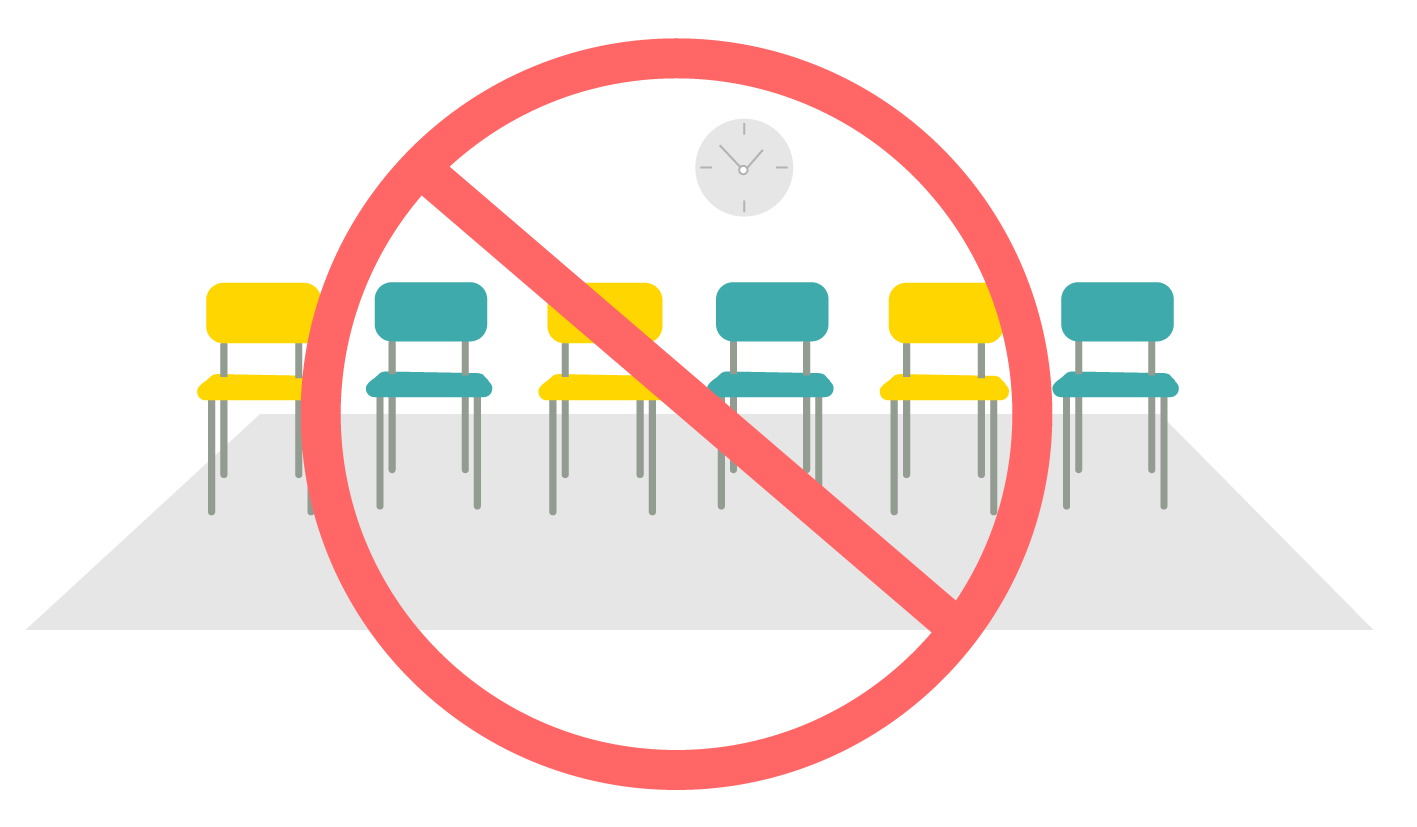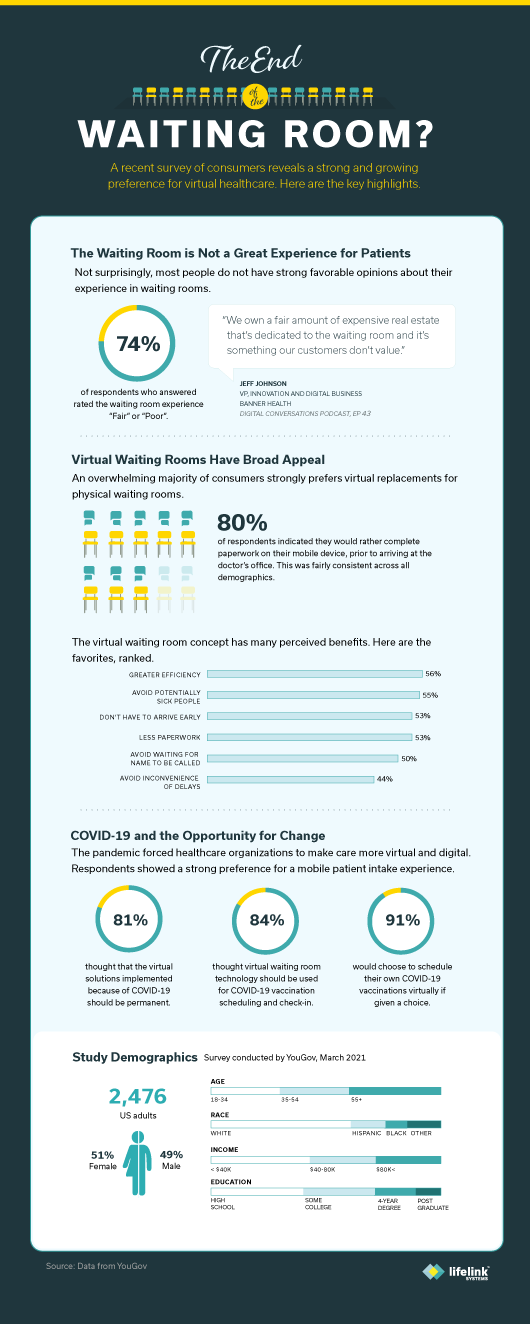Significant Preference for Virtual Waiting Room Technology for COVID-19 Vaccination Appointments Also Identified
Oakland, CA — April 20, 2021
Lifelink Systems today announced findings from a new survey measuring consumer sentiment for technology to virtualize the traditional doctor’s office waiting room experience. Responses collected from more than 2,400 U.S. adults identified a significant consumer preference towards mobile, virtual care technology that automates the waiting room experience before patients arrive for their appointments.
A total of 74% of respondents rated the typical waiting room experience as fair or poor, highlighting a well-known shortcoming of the patient experience. Survey participants were then presented with the concept of a Virtual Waiting Room, where they could use their mobile phone to check in and complete paperwork before they arrived at the doctor’s office. Eighty percent (80%) of respondents that shared their opinion said the virtual solution sounded better than going to the waiting room in person.
“COVID-19 has forced the industry to prioritize virtual care, but we were curious if consumers wanted more than just video consultations with their providers,” said Greg Johnsen, CEO at Lifelink Systems. “The waiting room process is something that should have been fixed long ago but when eight out of 10 people say a virtual waiting room sounds better than sitting in a doctor’s office waiting area, the time has arrived to rethink and prioritize that dimension of the patient experience.”
The study also asked respondents about the potential of virtual care technology as part of COVID-19 vaccinations. A total of 84% of respondents who shared an opinion agreed that virtual waiting room technology should be used to get people scheduled and checked in for their appointments. Nine of 10 respondents also said they would be willing to use virtual waiting room technology for their own vaccination appointments if given the option.
The survey, conducted by YouGov on behalf of Lifelink Systems, polled more than 2,400 U.S. adults across age, income, ethnic, and geographic groups. Aside from a modest virtual care preference increase for higher income groups, positive response rates were relatively even across all of the demographic categories. And in all segments, favorable responses were in the 65-85% range.
“When you see data from a broad cross-section of consumers where eight of 10 are saying they want something, that’s very telling,” added Johnsen. “Most Americans have mobile phones, and they are using those devices to conduct the business of life. Clearly, people want to bring healthcare into their mobile, virtual domains.”
This infographic highlights some of the key findings.


.png)




